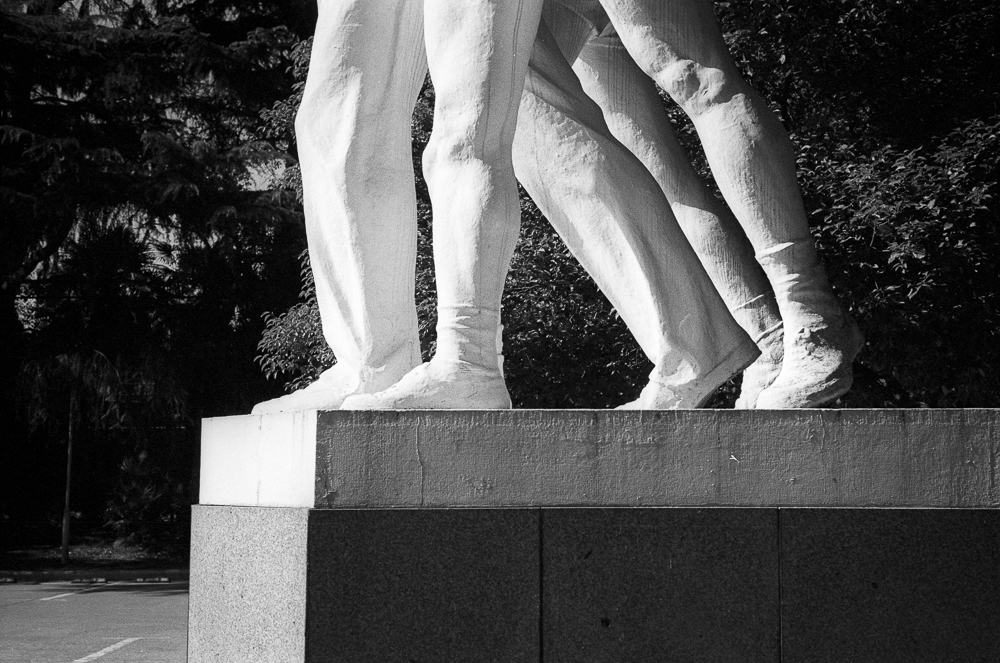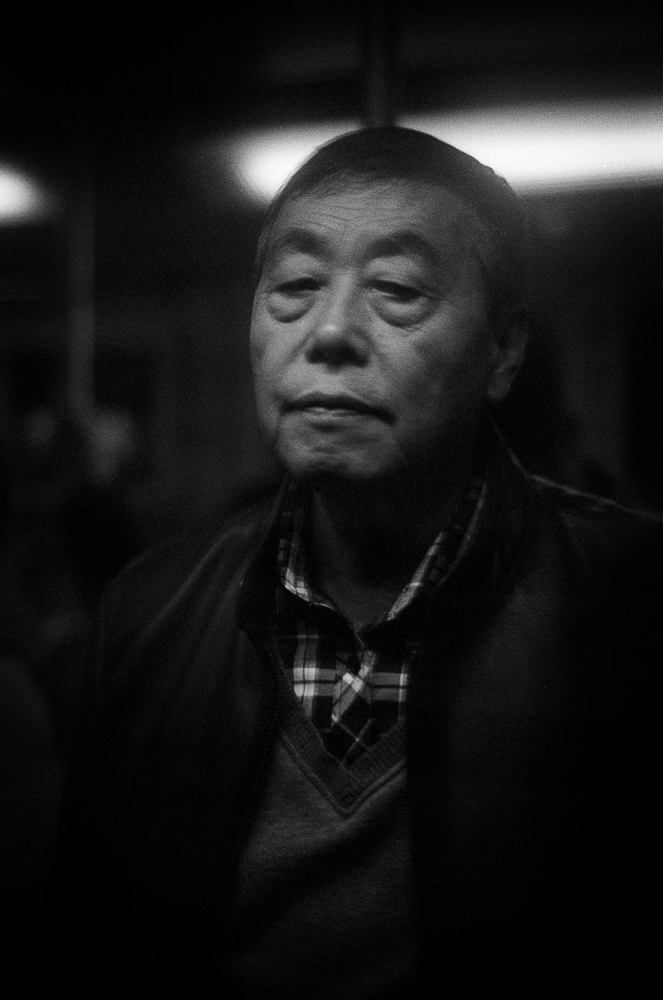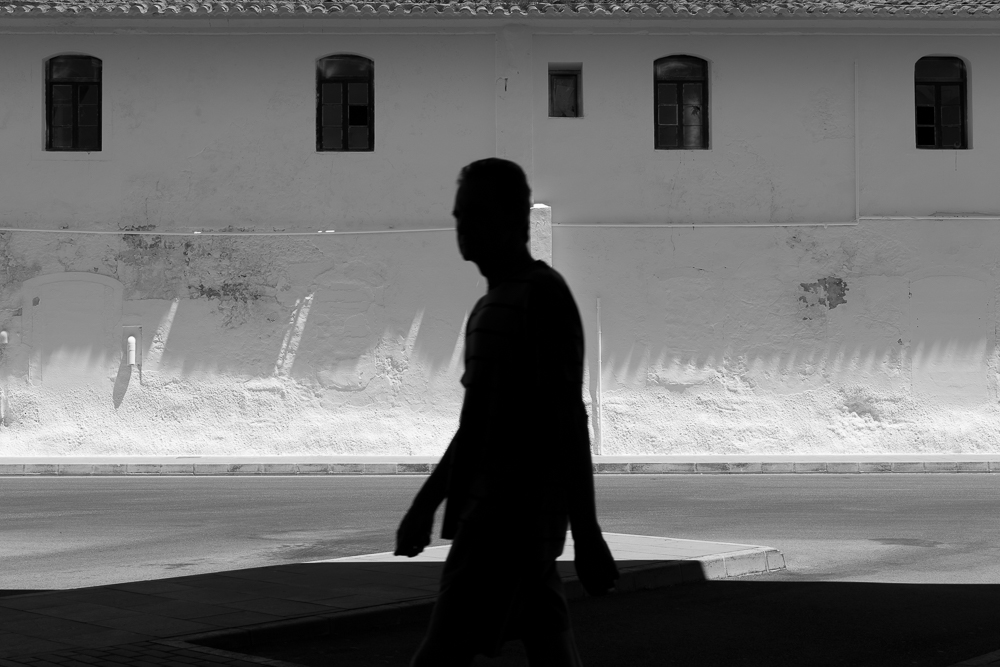Taken with a Huawei P20 Pro smartphone.
Window, Notes, Leica M6TTL and Ilford HP5 Plus film
Shanghai travelogue part 2: enter Ilford HP5 Plus
“No place is boring, if you’ve had a good night’s sleep and have a pocket full of unexposed film.”
In this instalment of my Shanghai Travelogue I’ll be looking at the second approach I took to shooting in China, namely with 35mm black and white film. Here, I was very much on home ground: my Leica M6TTL being my camera of choice and Ilford’s HP5 Plus my film. It’s an approach I am intimately familiar with, and, in the spirit of Adams’ quote above, one I enjoy for its simplicity. Waking up in Shanghai, with somewhat more than a pocket’s worth of film in my possession, was indeed a heady experience.
Million Matches, Leica M6TTL and HP5 Plus film
I chose HP5 Plus because I know it and its development routines intimately. Many people begin to ask themselves what equipment they need when travelling to new locations, almost as if they are starting again with their photography. Instead, I prefer (and indeed recommend) familiar equipment and technique. Why change your way of working, just because you are going to be somewhere different? Increasingly, over the past few months black and white has become my preferred style, and films like HP5 Plus have been a mainstay.
The majority of my shots were exposed at 320 with a view to developing them in Perceptol. This is something like my default black and white mode right now. One loses a little speed (hence 320 not ‘box speed’, 400) and development times are long, but for me there is something of a holy trinity of sharpness, good tonality and well-controlled grain. My manual 35mm rangefinder camera allows for a contemplative approach to shooting, but when one is in the flow it also allows for speed of reaction too. Choose an aperture and shutter speed, part focus the lens, and shooting can take place almost instantaneously. I’d wager I give the best autofocus systems a run for their money with my camera so primed.
Sports Statue, Leica M6TTL and HP5 Plus film
Builders in the Mist, Leica M6TTL and HP5 Plus film exposed at 1600
On a particularly misty day (which you can see in the shots), I decided to shoot at 1600. This flexibility is another virtue of HP5 Plus. It would mean another developer (this time LC29), but gave me a twofold advantage: speed when shooting on the underground trains, and small-ish apertures for street shots in the mist. The grain is somewhat exaggerated at this speed, but I think it complements the mist and was an effect I had visualised at the time. If my pursuit of 320 and Perceptol came from my earlier days of wanting to suppress grain for a cleaner look, my embracing grain at 1600 represents a more mature self who has made his peace with the medium and its quirks. There is beauty in grain. As ever with film, the key thing is to assess the situation in front of you and try to use your knowledge of printing and development to see a finished print in your mind’s eye.
I’ll be looking at my experience of shooting large format film with my Intrepid Field Camera in the next instalment. I hope you enjoy the shots.
Street Chef, Leica M6TTL and Ilford HP5 Plus film
Courtyard Tree, Leica M6TTL and HP5 Plus film
Commuter, Leica M6TTL and HP5 Plus film exposed at 1600
Street Silhouettes, Leica M6TTL and HP5 Plus film
Shanghai Lights, Leica M6TTL and HP5 Plus film
Raise your camera ... saying yes to it
“Raise your camera as you’re thinking about it, saying yes to it. Timing is everything.”
As a young street photographer, I couldn't get Meyerowitz's words out of my head. It seemed such apposite advice for the would-be street shooter: you will find yourself looking on and thinking, but think too long and the moment will be gone.
I'm not entirely sure that it's a motto I've been able to live by as a photographer; I'm not properly convinced it suits my style, nor have I always been brave enough to execute it.
The above recent image is, however, one of those moments where I followed Meyerowitz's mantra exactly. I had been shooting all day long, and had long shrugged off any early self-consciousness or hesitancy (that's usually the way it goes for me: starting gingerly, getting into the flow). I saw the scene from the corner of my eye and immediately raised my camera. There was next to no time to frame, and my press of the shutter was immediate too.
It was one of those images, where I intuited that something had taken place, but wasn't sure it had come together. I'm not even sure I could have had time to perceive the whole thing; it really was a case of intuition and experience leading the exposure.
I enjoy the mystery of the image, and that it is made up of a number of interacting elements.
Made using a Sony Xperia Smartphone
Birmingham Street in Winter Light
A dash of smartphone photography for your perusal today.
The light was stunning on this crisp December day, crystal clear and casting characteristic winter shadows. I had arrived at Birmingham in a high-rise car park and was stopped by the view. My mobile phone provided the tool to take advantage of the scene.
I converted the file to black and white in Lightroom and made a few modest tonal adjustments. I added the black border to stop the lighter edge tones from getting lost. The shape of the striding man in the middle puts me in mind of Louis Daguerre's photograph Boulevard du Temple of 1838, which is often cited as the first ever photograph to contain human beings.
Nikon F80 and 70-300 VR lens, Ilford FP4+ film
Six
The scoundrels at work, Barber Barber, Birmingham
Barber Barber, Birmingham
Sometimes a street photography scene comes to you. That was certainly the case here, as I walked past Barber Barber for the first time. This impressive establishment is located in the new Grand Central complex in Birmingham, and is positively baroque in visual features, not least the colourful atire of the staff (or 'scoundrels', as I believe they are called). The whole thing is patently designed to be looked at, with wall to floor glass to the front.
I double-backed, spent a moment or two framing, and waited for the figures to fill the spaces in a pleasing and dynamic way. I knew the lighting and visual interest would work well in black and white. A case of right film, right camera, right place.
I found the scene first, then waited for someone to walk into the right place
Be a better photographer - tip 8
Find the street scene, then wait for actors
In a great deal of the best street photography work there is a special relationship between the setting and the people in it. We often find ourselves marvelling at these shots because not only is the composition elegant and convincing, but there is a person in ‘just the right’ place in the frame. There is a coming together of setting and event, and in the very best this carries the extra weight of a poignant meaning as setting and actor(s) create a frisson. Henri Cartier-Bresson is one such master of this technique.
There is a simple technique you can use to make this happen in your shots (not that I’m promising you’ll immediately become a Cartier-Bresson). You simply find a setting you like, paying attention to composition and the shapes in the frame, and wait for somebody to arrive, in the right place.
In the image above, I was struck by the scene and the view through the opening (the slanting tree caught my eye), long before anybody arrived. I realised I could use this technique and wait for somebody to walk into the frame. It took several attempts to get somebody in the right position, and the right somebody, posture particularly, at that. I enjoy the way the woman’s leaning stride echoes the leaning tree. This elevates the shot from a view that catches the eye to something more.
A great technique if you’re into street photography.
A little street photography work, shot on a Sony A7II with a Sony / Zeiss 50mm f1.8















